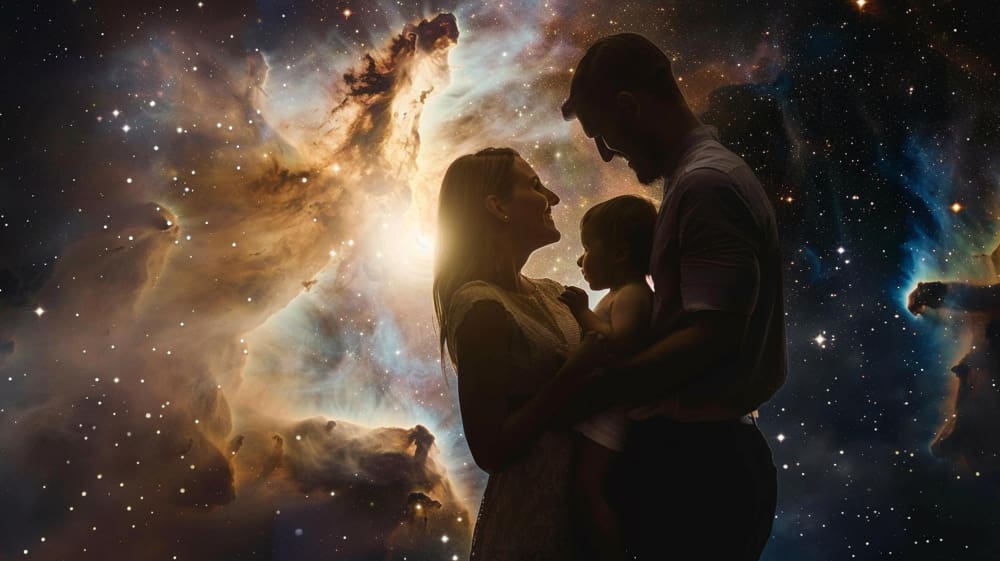In the intricate universe of Vedic Astrology, the Navamsa or D9 chart stands as the single most important divisional chart, offering a profound glimpse into the soul’s true essence, its destined path or dharma, and the intricate dynamics of marriage and partnership. While the primary birth chart (the Rasi or D1 chart) outlines the physical reality and tangible events of our lives—the “tree,” so to speak—the Navamsa chart reveals the “fruit” that this tree will bear. It is the ultimate celestial map that uncovers the inner strength of our planets, the nature of our future spouse, the quality of our relationships, and the spiritual merit we carry into this lifetime, making it an indispensable tool for anyone seeking deeper self-understanding and insight into their most significant bonds.
What is the Navamsa Chart?
Vedic Astrology, or Jyotish, utilizes a system of sixteen primary divisional charts, known as Vargas. Each Varga is a microscopic view of a specific area of life, derived through a unique mathematical division of the main Rasi chart. The Navamsa, whose name literally translates to “ninth division” (Nava meaning nine, amsa meaning division), is created by dividing each of the twelve zodiac signs (which are 30 degrees each) into nine equal parts of 3 degrees and 20 minutes.
The position of each planet in the main D1 chart is then mapped into a new sign based on which of these nine small divisions it falls into. This process generates an entirely new chart—the D9. This chart acts as a crucial layer of analysis, confirming, modifying, or sometimes even overriding the initial promises seen in the Rasi chart.
Astrologers hold that the D1 chart represents the promise of our current life, our physical body, and our manifest reality. The Navamsa, however, represents our inner self, our subconscious patterns, and the ultimate results that our karma will produce. It is often said that the Navamsa chart truly “activates” in the second half of life, typically after the age of 30, when our character has matured and our life path becomes more defined.
The Navamsa as the Blueprint for Marriage
The most famous application of the Navamsa chart is in the analysis of marriage, the spouse, and relationship harmony. It provides a remarkably detailed picture of what one seeks in a partner on a soul level and the kind of person they will ultimately attract.
The Navamsa Ascendant (Lagna)
The rising sign of the D9 chart, known as the Navamsa Lagna, is of paramount importance. It reveals your inner identity and the core values that guide your life path. More pointedly, it provides a stunningly accurate description of the general nature, appearance, and temperament of your spouse.
For example, a person with an Aries Navamsa Lagna may attract a partner who is assertive, independent, and pioneering. Conversely, a Libra Navamsa Lagna often points to a spouse who is charming, diplomatic, artistic, and partnership-oriented. The condition of the lord of the Navamsa Lagna further refines this interpretation, showing the overall fortune and character of the partner.
The 7th House and its Lord
Just as in the main birth chart, the 7th house in the Navamsa chart is the primary house of marriage and legal partnerships. The sign on the 7th house cusp, the planets placed within it, and any planets aspecting it all describe the quality and experience of your married life.
The lord of the 7th house in the D9 is a direct significator of the spouse. Its placement in the D9 chart is critical. If the 7th lord is well-placed in a friendly sign, exalted, or in a beneficial house (like the 1st, 4th, 5th, 9th, or 10th), it promises a supportive, fortunate, and harmonious partnership. If it is afflicted, debilitated, or placed in a challenging house (like the 6th, 8th, or 12th), it may indicate struggles, misunderstandings, or karmic lessons to be worked through within the relationship.
Key Planets: Venus and Jupiter
Beyond the houses, the natural significators (karakas) for relationships must be strong in the Navamsa. Venus (Shukra) is the universal karaka for love, romance, beauty, and pleasure. Its condition in the D9 reveals the capacity for love and the quality of romantic happiness one will experience.
For individuals seeking a female partner, Venus is a direct indicator of the wife. For those seeking a male partner, Jupiter (Guru) is the traditional karaka for the husband. A strong, unafflicted Jupiter in the D9 chart of a woman indicates a wise, supportive, and principled husband. The interplay between these planets and the 7th house provides a comprehensive view of marital potential.
Unlocking Your Soul’s Purpose (Dharma)
While its fame rests on marriage analysis, the Navamsa’s deeper purpose is to reveal our dharma—our inherent duty, ethics, and spiritual purpose. It is the true measure of a planet’s strength and our soul’s potential.
The Strength of Planets: Vargottama and Beyond
The Navamsa is the ultimate confirmation of a planet’s power. A planet may appear strong in the main D1 chart (for example, exalted or in its own sign), but if it is poorly placed in the D9 (for example, debilitated), its positive results will be weak or fail to manifest fully. It shows an external promise that lacks internal substance.
Conversely, a planet that seems weak in the D1 chart but becomes strong in the Navamsa (e.g., debilitated in D1 but exalted in D9) is a hidden gem. This indicates that while the person may face initial struggles related to that planet, their inner strength and perseverance will eventually lead to outstanding success in that area.
The most powerful placement is known as Vargottama, which occurs when a planet occupies the same zodiac sign in both the Rasi (D1) and the Navamsa (D9) charts. A Vargottama planet becomes exceptionally strong and is empowered to give stable, consistent, and highly favorable results throughout life, akin to it being in its own sign.
The Atmakaraka (AK) and the Karakamsa
In the Jaimini school of Vedic Astrology, the planet that has achieved the highest degree in any sign of the zodiac is designated as the Atmakaraka (AK), or the significator of the soul itself. The Atmakaraka represents the core desires of the soul and the primary karmic lessons we are here to learn.
The sign that the Atmakaraka occupies in the Navamsa chart is called the Karakamsa. This sign and the house it falls in become a spiritual pivot point in the horoscope. Analyzing the Karakamsa reveals a person’s spiritual inclinations, talents, and ultimate soul path. For instance, if the AK falls in a Jupiter-ruled sign like Sagittarius or Pisces in the D9, the soul’s path is connected to wisdom, teaching, and philosophy. If it falls in a Venus-ruled sign like Taurus or Libra, the path may involve art, devotion, and appreciating divine beauty.
Practical Application: Timing and Compatibility
The D9 chart is not just a static map; it is a dynamic tool used for prediction and assessment.
Using Dashas with the D9 Chart
The timing of marriage is often predicted by analyzing the planetary periods, or Dashas. A person is likely to get married during the major or minor Dasha period of a planet that is strongly connected to marriage in both the D1 and D9 charts. This could be the lord of the 7th house, a planet placed in the 7th house, or a planet strongly aspecting the 7th house or its lord in the Navamsa.
A Glimpse into Relationship Dynamics
When comparing the charts of two individuals for compatibility, the D9 is essential. It reveals the true inner connection beyond surface-level attraction. A strong synastry in the D1 chart might indicate a powerful initial connection, but if the D9 charts clash, it suggests that the underlying values and long-term needs of the partners are misaligned, leading to friction over time.
Conversely, two people whose D9 charts are in harmony—for instance, their Navamsa Ascendants are in a friendly alignment, or the D9 Moon of one person connects well with the D9 Ascendant of the other—have a deep, intuitive understanding that can sustain the relationship through life’s inevitable challenges.
In conclusion, the Navamsa chart is far more than a simple marriage calculator. It is a sophisticated and nuanced tool that offers a gateway to understanding our deepest self. It peels back the outer layers of our personality to reveal the soul’s karmic blueprint, the true strength of our character, and the ultimate destiny of our relationships. By studying the D9, we gain insight not only into the partner we will attract but into the person we are destined to become.








